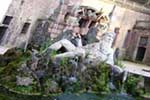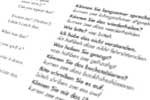museum of the palatinate
(kurpfälzisches museum)
The main focus of the Museum of the Palatinate, located in the Morass Palace, is the history of the Palatinate region and the city of Heidelberg. The collections in the museum, however, are not just limited to this area. They also include items from other parts of Germany, France, Italy and the Netherlands.
The archaeological section focuses on the past 600,000 years of civilization in the Heidelberg area. Featured in this collection are the copy of the jaw-bone of the Heidelberg Man, an exhibit documenting the Roman presence, findings from the Heiligenberg archaeological site, artifacts from the early Middle Ages and a section on urban archaeology.
The urban history of Heidelberg before 1800 is depicted from stone sculptures, gravestones, architectural components, and findings from excavations around the city. The history of the city after 1800 focuses on the Romantic era, the Revolution of 1848-49, Heidelberg at the turn of the 20th century, and National Socialism. There are also several rooms representing the change in furnishings and clothing throughout this time.
Another integral part of the region’s history is the museum’s extensive collection of paintings and sculptures, dating back to the late 1400’s; one of the most well-known pieces in the collection is Tilman Riemenschneider’s “Windsheim Altar” (1509). The collection also contains over 7,000 watercolors and drawings and 13,000 prints, with works by Romantic artists Rottmann, Fohr, and Fries, just to name a few.
Additionally, the exhibit on the history of the Electoral Palatinate, the ruling body which controlled the region from 1214 and 1803, shows the colorful and deep record of the area. The palace is a very suitable background for chronicling the portraits of the rulers, as well as the examples of furniture, Frankenthal porcelain, Ottheinrich tapestry, coins and medallions from this time period.



